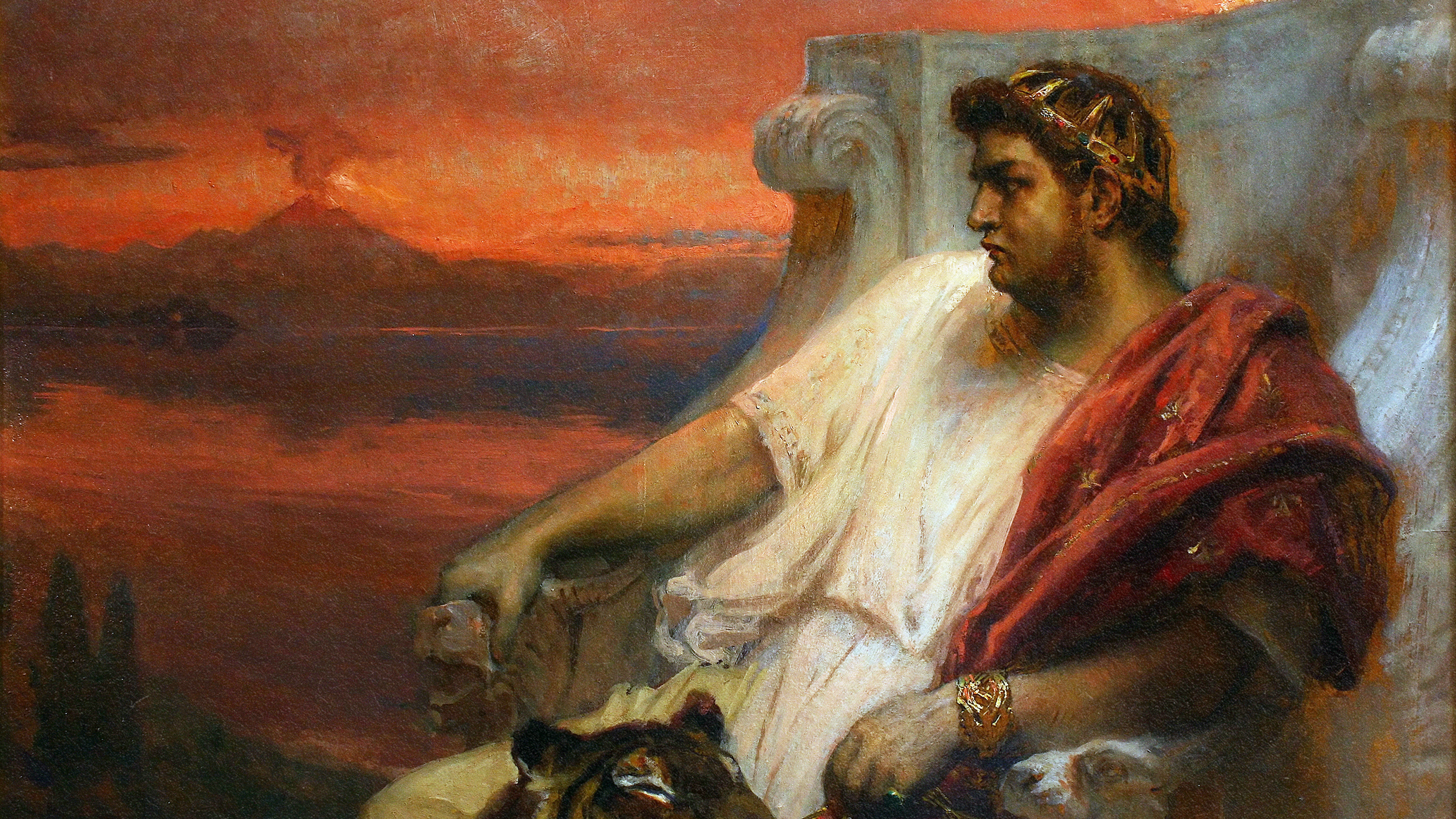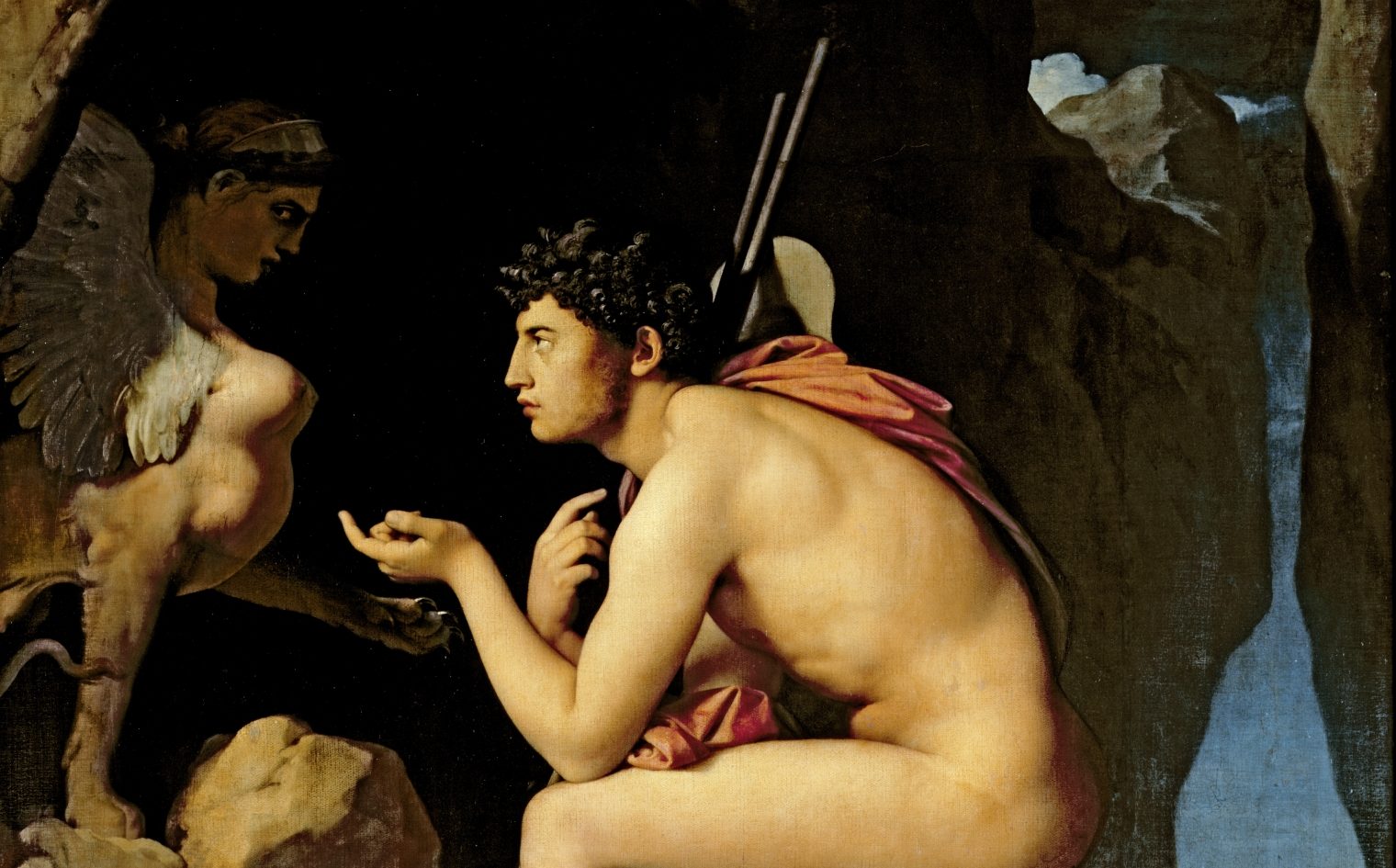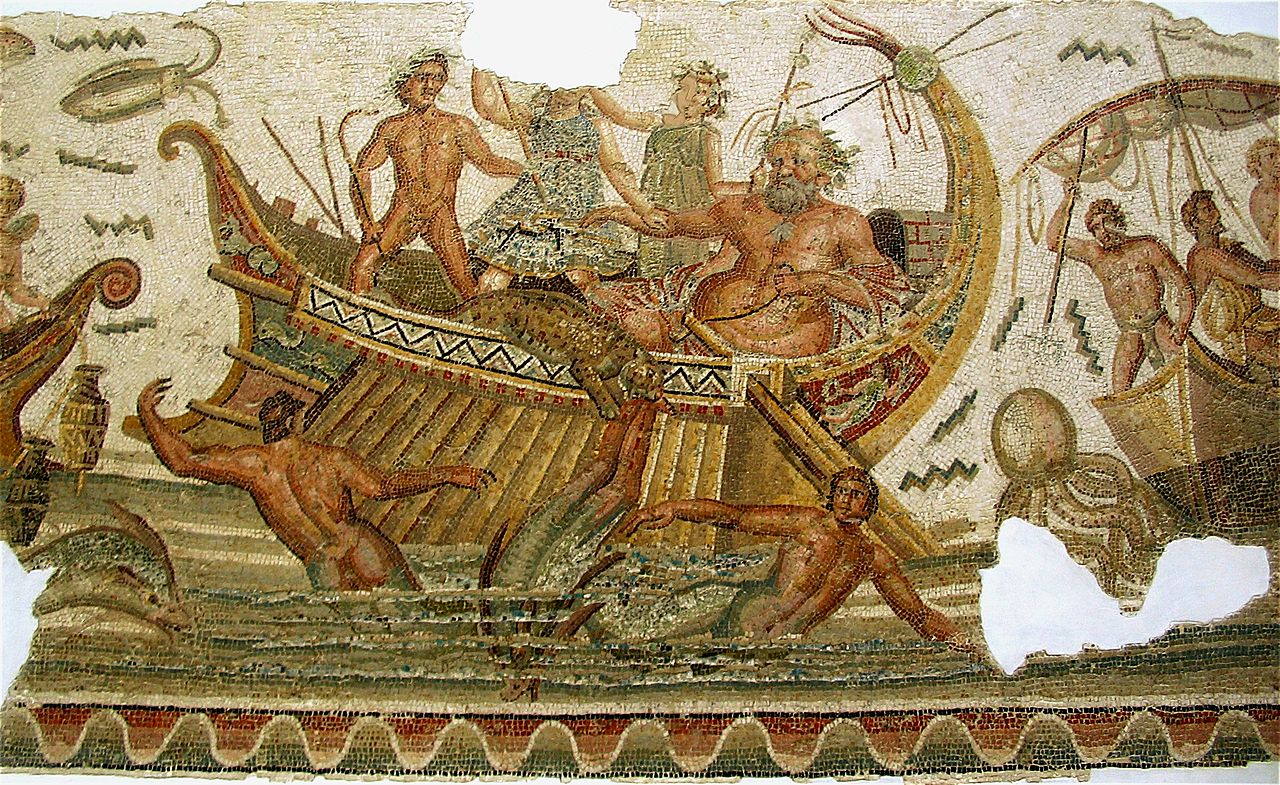Herostratus: the man who destroyed an ancient wonder of the world
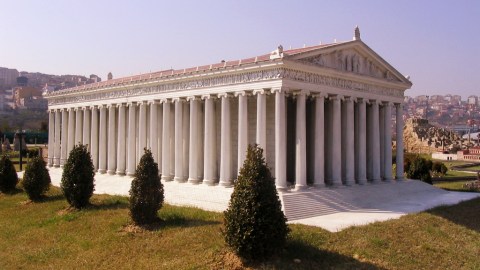
- Among the first structures to be built entirely of stone, the Temple of Artemis was a wonder of the ancient world.
- Unfortunately, the wonder was destroyed in a fire that was started deliberately by a disgruntled citizen named Herostratus.
- Herostratus, presumably a nobody, wanted to leave his mark on history. This he did, but not in the way he might have expected.
Around 1000 BC, Athenian colonists sailed across the Aegean Sea and settled on the shores of what would eventually become known as the city of Ephesus in modern-day Turkey. Among the culture and customs the colonists introduced to the region was their worship of Artemis — a goddess of hunting, wild animals, chastity, and childbirth — in whose honor they constructed a great temple.
The temple, which according to the historian Herodotus took over a century build, quickly became known as a wonder of the ancient world, joining the ranks of other man-made marvels like the Mausoleum at Halicarnassus, the Colossus of Rhodes, and the Statue of Zeus at Olympia. One of the first Greek temples to be made entirely of stone, the Artemisium, as it was also called, was a staggering 429 feet (131 m) long and 259 feet (79 m) wide. Archaeological evidence suggests it was built on a raised plateau, making it resistant to both floods and earthquakes. Accounts preserved by the Roman philosopher Pliny the Elder counted 127 columns, each 65 feet (20 m) high, made in the Ionic order of classical architecture, and — as evidenced by one specimen sent to the British Museum during the 19th century — decorated with scenes of Greek mythology.
Completing the structure were several larger-than-life statues of Artemis herself, the biggest of which was located in the center under a partially opened roof. Today, the Artemisium is known less for its meticulous construction than for its infamous demolition in 356 BC, which happened not — as its architects had feared — because of some natural disaster, but the deliberate actions of one disgruntled citizen known as Herostratus.
Damnatio memoriae
Little is known about Herostratus, who by sheer coincidence burned down the world wonder on the same night the Macedonian conqueror Alexander the Great was born into the world. Historians suspect that he was of low social standing, being either the son of a slave or a former slave himself. The Russian poet Semyon Nadson may have given the best analysis of the arsonist, who upon his arrest claimed that he committed this unthinkable crime because he was seeking kleos: infamy, notoriety. Nadson supposes that Herostratus was driven by the grim realization that he was but a “maggot squashed by destiny, in the midst of the countless hordes,” and that destroying the Temple of Artemis was the only way for him to leave his mark on history.
The authorities of Ephesus did not feel that the death sentence matched the severity of the crime. To truly punish the fame-seeking felon, it was decided that — in addition to death — Herostratus would be sentenced to damnatio memoriae, meaning that from there on out it would be forbidden to mention his name either in conversation or in writing.
Damnatio memoriae was a common practice in classical antiquity, with the Roman writer and grammarian Aulus Gellius explaining that terms like inlaudatus and inlaudabilis were used to refer to “one who is worthy of neither mention nor remembrance and is never to be named; as, for example, in days gone by the common council of Asia decreed that no one should ever mention the name of the man who had burned the temple of Diana [the Roman name for Artemis] at Ephesus.” The founder of the Roman Empire, Augustus, passed the sentence to his defeated rival Marc Anthony. Joseph Stalin, while not from the ancient world, did the same to his enemies.
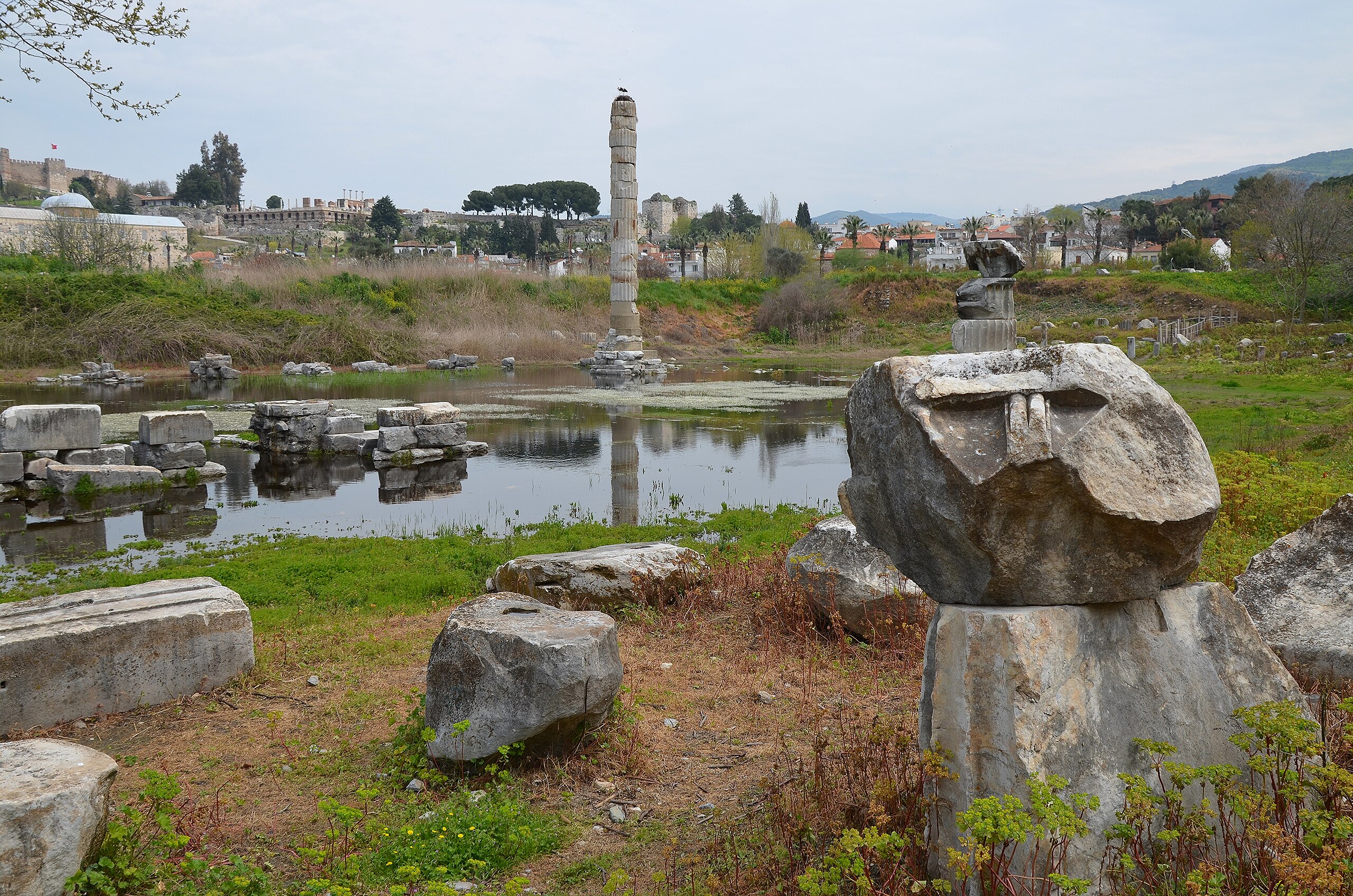
Ironically, damnatio memoriae often had the opposite effect, preserving a person’s memory rather than erasing it. Though temporarily ignored, Anthony remains as well-known a figure in world history as Augustus. Herostratus, for his part, is now far more famous than the temple’s talented builders. Overlooked by historians from his hometown, his legacy survives thanks to Theopompus, a historian from the island of Chios who did not fall under the jurisdiction of Ephesus and, in his quest to record events as accurately as possible, mentioned the destroyer of the Temple of Artemis by name in his biography of King Philip II, the Philippica.
The information provided by Theopompus was later incorporated into the accounts of the Greek geographer Strabo as well as that of the Roman historians Plutarch, Valerius Maximus, and Gellius.
Herostratus syndrome
Herostratus’ memory is not only preserved in history, but also in art, literature, and philosophy. In his 1658 book Hydriotaphia, the English polymath Thomas Browne noted the poetic irony of the crime and its motive, writing:
“But the iniquity of oblivion blindly scattereth her poppy, and deals with the memory of men without distinction to merit of perpetuity… Herostratus lives that burnt the Temple of Diana, he is almost lost that built it… Who knows whether the best of men be known, or whether there be not more remarkable persons forgot than any that stand remembered in the known account of time?
The same irony has been exploited by Don Quixote author Miguel de Cervantes, the English poet Geoffrey Chaucer, and even Russian director Andrei Tarkovsky in his film Stalker. The French existentialist Jean-Paul Sartre produced an especially detailed homage to Herostratus with an eponymous short story. Inspired by the ancient tragedy, Erostratus follows a Parisian man named Paul Hilbert who, plagued by low self-esteem and impotence, decides to grab a pistol and start murdering passersby at random.
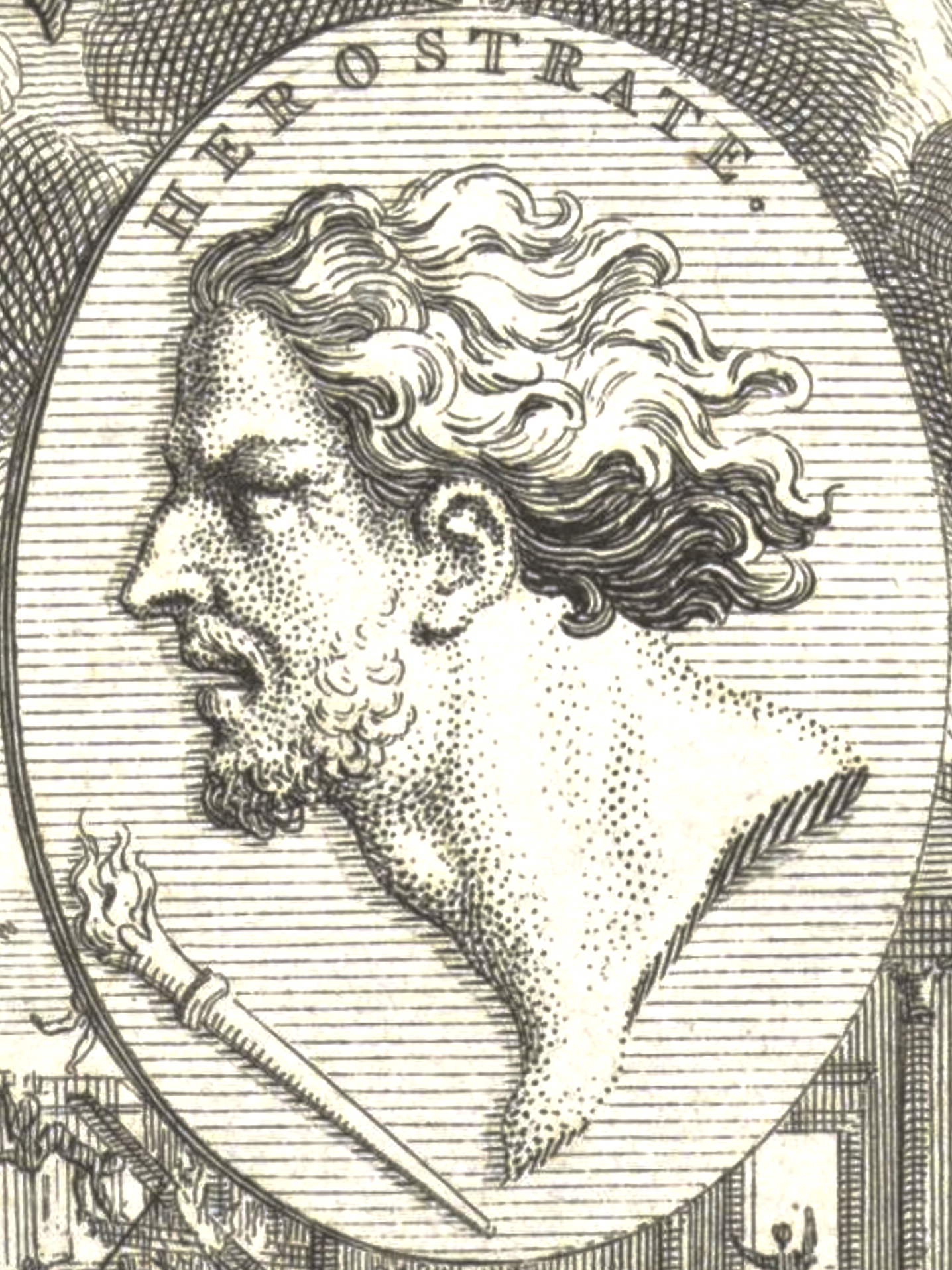
Literary critics note that Sartre’s story, originally published in 1939, bears a haunting resemblance to the crimes of serial killers and religious terrorists making headlines today. Channeling their inner Hilberts and Herostratuses, these individuals — in the words of Matthew Fraser, author of Monumental Fury: The History of Iconoclasm and the Future of Our Past — turn to violence to make “a desperate claim on personal identity.” Connecting the burning of the Temple of Artemis to the Islamist demolition of age-old Buddhist architecture and artifacts in Afghanistan over 2,000 years later, the ethnologist Pierre Centlivres wrote of both as attacks “against piety and beauty, a religious offense and an outrage to an art monument. In other words, a sacrifice in all its ambiguous meanings.”
Actually, the resemblance between these contemporary copycats and Herostratus is so strong that sociologists and criminal psychologists now speak of “Herostratus syndrome.” Defined by the scholars Jean-Paul Azam and Mario Ferrero as affecting “people who perpetrate odious attacks for the sake of infamy,” symptoms, as listed by Polish psychologist Michael Myslobodsky in his book The Fallacy of Mother’s Wisdom, include:
“Signs of deep humiliation due to public revelation (actual or imagined) of either personal inadequacies (assumed or genuine) or those presumably shared via the membership in groups; Attribution of unhappiness and resentment to individuals who belong to salient factions or institutions; Relative prosperity of adversaries that is considered unfair; Feeling of being trapped in a punitive situation with no way of recovery from the current bleak state unless the enemy suffers recognizable injury or pain; A culture of redemption and recovery through retribution; Unquenchable craving for recognition and immortality.”
At a glance, it seems as though Herostratus had the last laugh. However, that is not the case. Although he did procure a small place in the history books, it’s what he did — not who he was — that we remember. While his destruction of the Temple of Artemis has been studied ad nauseam, we still know almost nothing about his life prior to that fateful night. As such, even his motivations remain a product of speculation.

